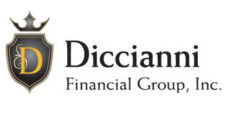As the third part of series unfolds we are now moving up on our investment pyramid into the low risk category of investments. Let’s review the elements of risk and how low risk investments can work for you.
Risk is defined as the possibility of suffering loss. The investments that we discussed to date, Savings bonds, Treasury bonds and bills, savings and checking accounts and bank CD’s, are all either of the lowest risk or low risk type of investments and therefore, reflect lower returns. The relatively low risk category includes Convertible Bonds or Mutual Funds, Preferred Stock or Mutual Funds and Balanced Stocks and Balance approach Mutual Funds.
Convertible Bonds and Mutual Funds
A convertible bond is a corporate bond, which pays a fixed rate of interest, but can be exchanged for a specific number of shares of common stock in the same company. The company can offer this exchange called a conversion ratio, if they need to get a “debt” off of their books.
The flexibility of this conversion has a price. The rate of return (coupon rate) is usually lower than the rate on a “straight” or non-convertible bond. Mutual Funds that invest in Convertible Bonds have a fairly predictable rate of return based on the underlying Convertible Bonds that they are invested in.
High Quality Preferred Stocks or Mutual Funds
The name is deceptive. Although it is called preferred stock, it is really a fixed-income security more like a corporate bond. For most individual investors, it does not make sense to invest in preferred stock because the yields are very close to the yields on similarly rated bonds and because preferred stockholders lack legal power to force dividend payment.
Preferred stocks do have an advantage over common stocks in that they pay their owners in the event the company goes bankrupt.
Balance Stocks and Bond Mutual Funds
A little higher on our risk ladder are mutual funds, which offer an opportunity to invest in a mixed bag of stocks and bonds. You can choose your level of risk tolerance within a mutual fund of this type by selecting the funds that offer your comfort ratio, for example a 50% Stock and a 50% bond mix is very stable verses a 75% Stock and a 25% Bond fund.
The advantage of a Balance Mutual fund approach is the mitigation of risk in the market. These funds tend to be a slow but steady performer regardless of the market condition. The disadvantages are the sacrifice of growth over time. Certainly there is a place for a percentage of an investment of this nature in an overall balanced portfolio.
Balanced Stock and Bond Mutual Funds are an integral part of an older client or pre-retiree client’s portfolio.
Once again knowing which investments and when to use them is key to all successful financial plans. This starts with a good understanding of you ability to handle risk and the comfort level that you are willing to live with.
The investments that we just discussed will enhance a portfolio where income is necessary and risk tolerance is low. It is also an adjunct part of a portfolio where some growth is needed or a balance to a higher growth model is used. Contact us today to consult a financial advisor to assist you in creating the best portfolio for the investment outcomes you desire.

